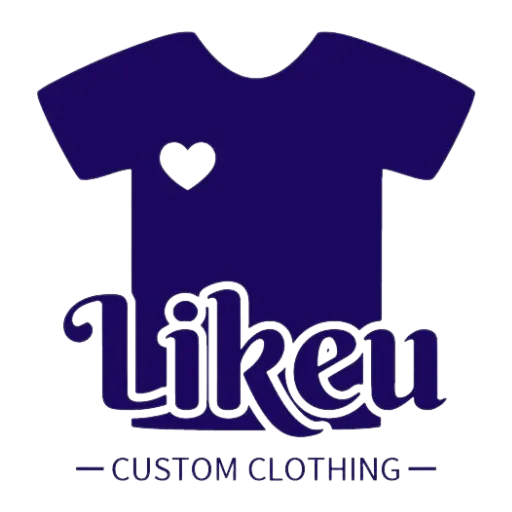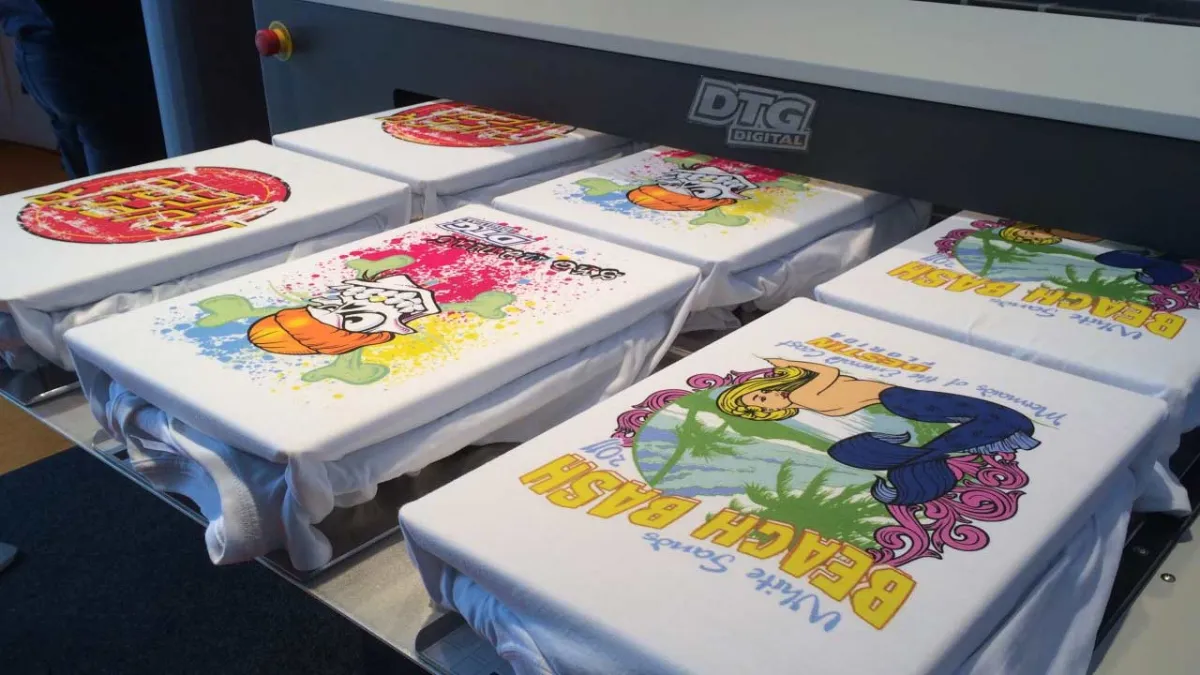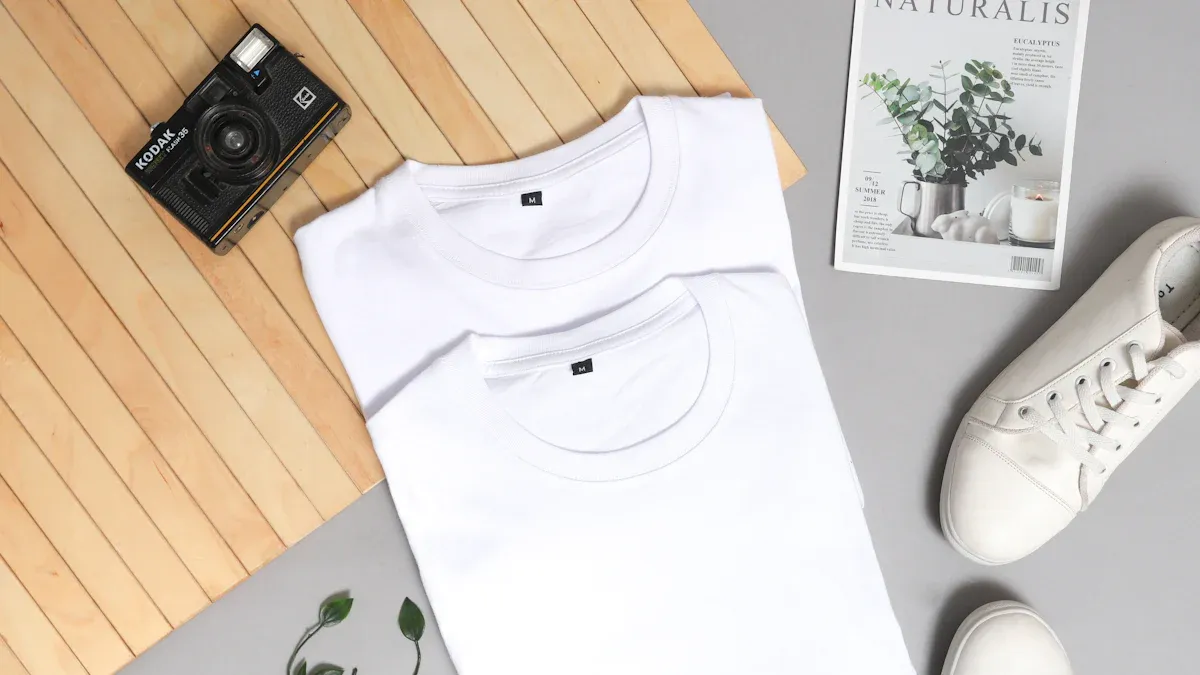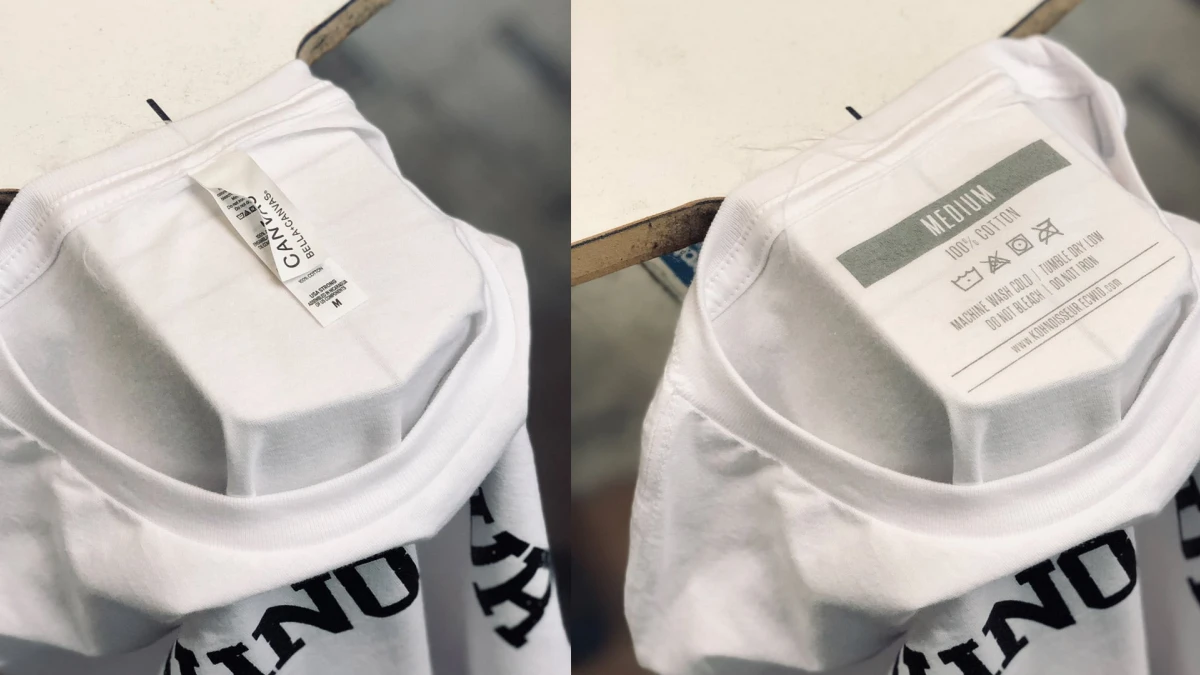Direct to garment (dtg) printing uses new digital tools. It prints custom designs right onto t-shirts and other clothes. In 2025, dtg printing is special. It helps people who care about the planet. It is good for small businesses and startups. They want fast, custom t-shirts when they need them. Many people pick dtg because it uses water-based inks. It also makes less waste. This helps keep the earth safe. Likeu Clothing gives dtg services. They help with special custom projects. They also work fast.
The table below explains why dtg printing is important in 2025:
Aspect | Why DTG Printing Matters in 2025 |
|---|---|
Market Growth | 4.4% CAGR expected (2025-2035), because people want custom, eco-friendly shirts |
Sustainability | Water-based inks and less waste are good for people who care about the earth |
Consumer Demand | Many people in North America and Europe want custom, earth-friendly t-shirts |
Key Takeaways
DTG printing uses digital tools to print bright, detailed designs right on cotton shirts. It works fast and does not make much waste. This method is great for small orders and custom designs. It is good for businesses that want quick, flexible, and earth-friendly printing. DTG printing uses water-based inks and less energy. This makes it a greener choice that helps the planet. Picking 100% cotton shirts gives the best print quality. It also gives bright colors and designs that last long. Likeu Clothing gives expert DTG printing services. They help customers make high-quality custom shirts fast.
Direct to Garment (DTG) Printing
What is DTG Printing?
Direct to garment (dtg) printing is a digital way to put ink on fabric. This method works best on clothes made from 100% cotton. DTG printing does not use screens or plates like old methods. The printer sprays water-based inks right onto the shirt. This makes bright and detailed designs. People like dtg printing because it is fast for small or custom orders.
DTG printing is special because it can print up to 16 million colors at once. This means the images look bright and real. You can order just one shirt or many. This helps businesses make custom products for their customers. Many factories use dtg printing now. It saves time and makes less waste. In 2025, the dtg printer market was worth $212.2 million. More companies are choosing dtg over old ways.
The table below shows how dtg printing is different from other digital printing:
Aspect | DTG Printing | Traditional Digital Printing |
|---|---|---|
Definition | Advanced digital printing; prints directly on fabric with white ink and pretreatment | Uses digital nozzles to spray dye; less vivid colors |
Printing Precision | Up to 2880 dpi | Around 200 dpi |
Color Options | Up to 16.77 million colors; vivid saturation | Limited color saturation |
Process Complexity | Simple; no plates or screens; flexible for small batches | Complex steps; longer setup |
Production Cycle | Fast prototyping; supports customization | Long cycle; higher cost |
Environmental Impact | Green production; low waste and pollution | High energy use; more pollution |
Production Flexibility | Single piece to mass production; no pattern limits | Not suitable for small batches |
Likeu Clothing uses new dtg printing machines to help people make special shirts. They can print small or big orders. This makes it easy for anyone to design and print shirts. You can learn more at Likeu Clothing’s DTG services.
How DTG Printing Works
DTG printing uses a few easy steps to make great prints. Each step helps the design look good and last long.
Pretreatment: The shirt gets a special liquid. This helps the ink stick to the fabric. It is very important for dark shirts. Pretreatment keeps the colors bright and stops the ink from spreading.
Printing: The printer uses CMYK inks to make the design. For dark shirts, it prints a white base first. Then, it adds all the colors on top. This way, dtg printing can make millions of colors and fine details.
Curing: After printing, the shirt goes through heat. This step dries the ink. It makes the print strong and washable.
DTG printing does not need long setup times or big orders. Businesses can print one shirt or many. The process also works with web-to-print systems. This connects online orders right to the printer. DTG printing is fast and easy.
Tip: DTG printing uses water-based inks and dry heat. This saves water and makes less pollution. It is better for the earth than old printing ways.
DTG printing has many good points:
Can print detailed, colorful designs with no extra cost.
Lets you try new products with little risk.
Print-on-demand means you do not need to keep lots of shirts in stock.
Likeu Clothing uses these good things to help small businesses and creators. Their team checks each step to make sure prints look great. Customers get bright and strong prints every time.
Custom Designs for DTG
Best Design Types
DTG printing works best for custom t-shirts that need detailed designs and many colors. People choose dtg when they want unique, colorful, or photorealistic images on their t-shirt. This method handles high detail and complex designs that other printing methods cannot match. Many trends in custom apparel favor dtg. These include:
Personalized clothing for self-expression
Limited-edition or influencer merchandise
Small-batch or print-on-demand custom t-shirts
Designs with many colors or gradients
DTG lets creators print just one t-shirt or a small batch. This helps artists, brands, and businesses test new ideas without large orders. Likeu Clothing uses dtg to help customers bring their custom ideas to life with vibrant colors and sharp details.
File Formats and Resolution
To get the best results from dtg, customers should use the right file formats and resolution for their design. The most recommended formats include PNG, JPEG, EPS, SVG, AI, PDF, PSD, and TIF. PNG files work well for custom t-shirts because they support transparent backgrounds. This keeps the design clean on any color shirt.
A resolution of 300 DPI is best for dtg printing. High-resolution designs make sure the print looks sharp and clear. Low-resolution images, like those found online at 72 DPI, can look blurry or pixelated on a t-shirt. Customers should always create their design at the size they want it printed. Likeu Clothing checks each file to make sure every custom t-shirt meets these standards.
Tip: Always use a transparent background for designs on colored t-shirts. This helps dtg printers create crisp edges and bright colors.
Suitable Garments
DTG printing gives the best results on 100% cotton garments. Cotton fibers bond well with water-based inks, making colors vibrant and designs durable. Pre-treatment on cotton shirts helps the ink stick and keeps the design looking new after many washes. DTG also works on cotton blends, but pure cotton gives the softest feel and brightest colors.
A table below shows why 100% cotton is best for dtg custom t-shirts:
Fabric Type | Print Quality | Color Vibrancy | Durability | Comfort |
|---|---|---|---|---|
100% Cotton | Excellent | Very High | High | Soft |
Cotton Blend | Good | High | Medium | Soft |
Synthetic | Fair | Low | Low | Varies |
Likeu Clothing recommends 100% cotton for all custom t-shirts. This ensures every design looks its best and feels comfortable to wear.
DTG Printing Benefits
Flexibility and Speed
DTG printing lets businesses and creators be very flexible. You do not need to order a lot of shirts. You can print just one shirt or a few. This method makes it easy to change designs fast. The printer can make a shirt in about one minute. New machines start printing right after getting the design. This makes dtg printing great for quick jobs and special orders.
Setup is fast, so you get shirts quickly.
Every shirt can have its own design.
Changing designs is simple and quick.
Likeu Clothing uses new machines to finish orders fast.
DTG printing helps small businesses and artists try new ideas. They do not need to spend a lot of money. This helps them stay creative and do well.
Quality and Color Range
DTG printing makes shirts with bright colors and clear details. The inks are high quality and show small lines and hard designs. Special software helps match the colors just right. Each print can show up to 16 million colors. There are no limits on color choices. This makes dtg printing good for brands that want special, colorful shirts.
Good inks make colors that last after many washes.
Small details and color changes look clear on every shirt.
Pretreatment and heat keep colors bright and strong.
Likeu Clothing checks every shirt for good color and quality.
Designers can use dtg printing for real-looking pictures and bold art. Customers get shirts with bright colors that last a long time.
Eco-Friendly Aspects
DTG printing is a green way to make custom shirts. This method uses water-based inks that break down in nature. Ink only goes where it is needed, so there is less waste. New dtg printers use less power than old screen printing. Printing only when needed means less extra shirts and less waste.
Environmental Factor | Print-on-Demand (DTG) | Traditional Screen Printing |
|---|---|---|
Lower | Higher | |
Waste | Minimal | High |
Carbon Emissions | Lower | Higher |
DTG printing does not use strong chemicals and saves water.
Using organic cotton works well with this method.
Likeu Clothing picks green materials and smart ways to print.
DTG printing helps keep the earth safe while making cool shirts. It is a top choice for people who care about the planet.
DTG vs. Screen Printing
Cost and Order Size
DTG printing and screen printing have different costs and work best for different order sizes. DTG printing uses digital technology, so it does not need screens or long setup. This makes it excellent for small orders and custom projects. Screen printing needs a separate screen for each color, which increases setup costs. For large orders, screen printing becomes more cost-effective because the setup cost spreads over many shirts.
Feature | DTG Printing | Screen Printing |
|---|---|---|
Setup Cost | Minimal, no screens needed | High, screens for each color |
Cost Per Unit (Small) | Lower, no setup fees | Higher, setup costs increase price |
Cost Per Unit (Bulk) | Stays higher | Drops as order size grows |
Minimum Order Size | No minimum | Often 5-100 pieces |
For example, a business that needs 10 custom shirts with full-color designs saves money with dtg printing. A company that wants 500 shirts with a simple logo pays less per shirt with screen printing.
Design Complexity
DTG printing handles complex, detailed, and colorful designs with ease. It prints the whole design at once, so it works well for photos, gradients, and fine lines. Screen printing works best for simple designs with one or two colors. Each color in screen printing needs a new screen, which makes complex designs harder and more expensive.
Industry studies show that dtg printing is the top choice for custom shirts with many colors or detailed artwork. Screen printing is better for large orders with simple designs, such as logos or text.
When to Choose DTG Printing
Choosing between dtg printing and screen printing depends on order size and design needs:
DTG printing is excellent for small orders, usually fewer than 12 pieces.
DTG is best for custom designs with many colors or photo-like images.
Screen printing is more cost-effective for large orders with simple designs.
When to choose dtg printing: Pick dtg for small, custom, or rush orders with complex artwork.
When to choose screen printing: Choose screen printing for big orders with simple, bold designs.
Likeu Clothing helps customers decide which method fits their project. Their team uses dtg printing for detailed, colorful, and custom shirts, making it easy for small businesses and creators to get high-quality results.
Practical Tips for DTG
Submitting Your Design
Getting your artwork ready is the first step. Use high-resolution images, about 300 DPI, for clear prints. The right color profile, like CMYK, helps colors look the same on shirts and screens. Pretreatment is needed for dark shirts. It makes colors brighter and helps ink stay on. Test your print before making many shirts. This can catch problems like wrong colors or uneven ink. Testing saves time and money.
Keep your design files smaller than 10MB and at least 1500px by 1500px.
Use file types like .ai, .png, .jpg, .pdf, or .eps. Transparent backgrounds are best.
Upload files that are ready to print, either editable vector or high-resolution raster files.
DTG printing keeps details and texture in photos or scanned drawings.
Make sure your text is easy to read by checking the color contrast with the shirt.
Do not use copyrighted images unless you have permission.
Tip: Always print your design on a sample shirt before making a big order.
Choosing the Right Garment
The shirt you pick changes how the print looks. Guides say 100% cotton works best for dtg. Cotton soaks up ink well and feels soft. Cotton blends can work, too, especially for all-over prints. Pure polyester is not as good. Studies show treating cotton with special chemicals makes colors stronger and last longer. Pretreatment acts like a base coat. It helps prints stay bright and last after washing.
A table below shows how different fabrics work:
Fabric Type | Print Quality | Durability | Comfort |
|---|---|---|---|
100% Cotton | Excellent | High | Soft |
Cotton Blend | Good | Medium | Soft |
Polyester | Fair | Low | Varies |
Picking the right shirt helps every design look great.
Working with Likeu Clothing
Likeu Clothing helps you at every step of printing custom shirts. Their team checks your artwork and helps you pick the best shirts. They test prints to make sure they look good. They use new dtg machines and earth-friendly ways to print. You can send your design for review. Likeu Clothing gives tips to help you get better results. This helps small businesses and creators print shirts easily. Likeu Clothing’s experts make sure every shirt has good color, detail, and lasts a long time.
Note: Likeu Clothing is known for good service and quality. They are a trusted partner for dtg and custom shirts.
DTG printing in 2025 is quick and good for the earth. It lets people make custom shirts fast and easy. Likeu Clothing uses new machines for bright prints. You do not have to order a lot of shirts. The table below shows why DTG is special:
Benefit | 2025 DTG Printing Outcome |
|---|---|
Market Share | |
Water Use Reduction | Up to 95% less than traditional methods |
Speed | Same-day sampling, faster turnaround |
Customization | Unlimited colors, no setup costs |
DTG helps brands and artists keep up with what people want. It also helps take care of the planet.
FAQ
What makes DTG printing different from other methods?
DTG printing uses digital tools to put designs on fabric. It is best for small orders and detailed pictures. Likeu Clothing uses new DTG printers for bright, strong prints.
Can DTG printing handle photos and complex artwork?
Yes, DTG printing can print photos and hard designs. It can show millions of colors and smooth color changes. Likeu Clothing checks each design to make sure it looks sharp and clear.
How should customers prepare their artwork for DTG printing?
Customers should use high-quality files, at least 300 DPI. Good formats are PNG or PDF. Transparent backgrounds work best for printing. Likeu Clothing looks at every file to help customers get great results.
Is DTG printing eco-friendly?
DTG printing uses water-based inks and makes less waste. It is better for the earth than old printing ways. Likeu Clothing picks green materials and safe ways to print.
What types of shirts work best with DTG printing?
100% cotton shirts work best for DTG printing. Cotton soaks up ink and keeps colors bright. Likeu Clothing says cotton shirts give the best prints and feel soft.





